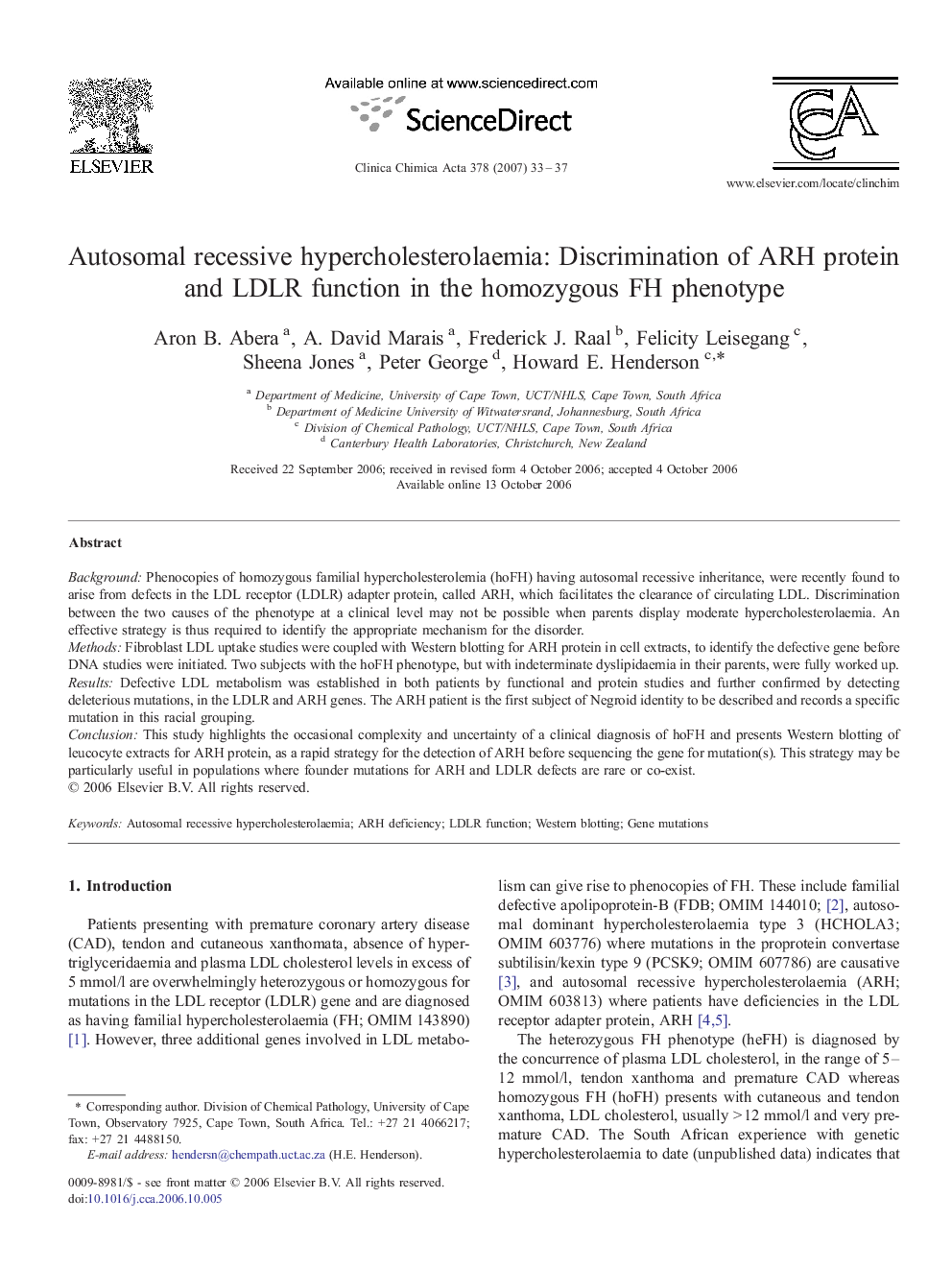| Article ID | Journal | Published Year | Pages | File Type |
|---|---|---|---|---|
| 1967635 | Clinica Chimica Acta | 2007 | 5 Pages |
BackgroundPhenocopies of homozygous familial hypercholesterolemia (hoFH) having autosomal recessive inheritance, were recently found to arise from defects in the LDL receptor (LDLR) adapter protein, called ARH, which facilitates the clearance of circulating LDL. Discrimination between the two causes of the phenotype at a clinical level may not be possible when parents display moderate hypercholesterolaemia. An effective strategy is thus required to identify the appropriate mechanism for the disorder.MethodsFibroblast LDL uptake studies were coupled with Western blotting for ARH protein in cell extracts, to identify the defective gene before DNA studies were initiated. Two subjects with the hoFH phenotype, but with indeterminate dyslipidaemia in their parents, were fully worked up.ResultsDefective LDL metabolism was established in both patients by functional and protein studies and further confirmed by detecting deleterious mutations, in the LDLR and ARH genes. The ARH patient is the first subject of Negroid identity to be described and records a specific mutation in this racial grouping.ConclusionThis study highlights the occasional complexity and uncertainty of a clinical diagnosis of hoFH and presents Western blotting of leucocyte extracts for ARH protein, as a rapid strategy for the detection of ARH before sequencing the gene for mutation(s). This strategy may be particularly useful in populations where founder mutations for ARH and LDLR defects are rare or co-exist.
